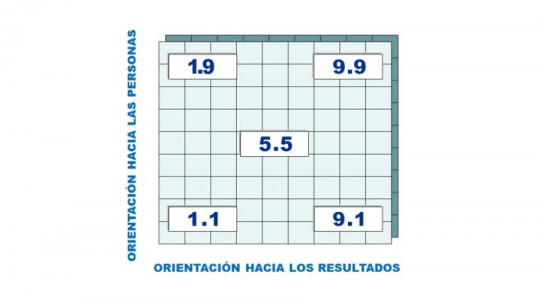Negotiating is not always easy. There isn’t even one way to do it, so sometimes you have to know which style to choose.
In order to make it a little easier, let’s review the most important types of negotiation styles to be able to observe the qualities of each of them, the advantages they offer for certain situations and therefore which is the most optimal depending on the scenario in which we are.
Negotiation characteristics
In order to talk about the types of negotiation styles, it is advisable that we first try to delve deeper into this issue in order to clarify the basic concepts at hand. Negotiation is an act of interaction between two or more individuals or entities in which each party tries to obtain the best conditions for itself or for the group they represent
The interactions underlying a negotiation can be simple or tremendously complex. Each person involved has their own idiosyncrasies, lives in a specific context, has very particular needs and experiences specific emotions in relation to the matter that concerns them. Therefore, the psychological issue will be very relevant, as we will see when reviewing the types of negotiation style.
It must be taken into account that another fundamental characteristic of any negotiation is that It is based on the principle that each party involved must have its demands satisfied, partially, since no one can obtain the totality of what they asked for , because that would mean that someone else would be losing everything. On the contrary, everyone will have to give in, even in part.
Regarding the benefits we were talking about, it is important to distinguish between real needs and mere desires. Likewise, although a party involved in a negotiation (through one of the types of negotiation styles that we will see) has established a certain benefit as a goal, it does not mean that this is necessarily the final result. As we have already mentioned, the usual thing is to make assignments.
Another key issue to understand the negotiation is that Whether or not you finally reach an agreement does not define this interaction In other words, two or more parties can negotiate on a certain issue, and ultimately not understand each other, so no deal will be closed. But, even so, what has taken place has been a full-fledged negotiation, only it has not concluded in any agreement.
The different types of negotiation style
Now that we have been able to discover what the act of negotiating entails, we can move on to review the main types of negotiation style and thus appreciate the qualities of each of them and of course the usefulness they offer depending on the situation in which we are dealing. the negotiating parties meet. Let’s look at them carefully.
1. Flexible negotiation style
The first of the types of negotiation style that we can find is the flexible one. This style It is characterized by a predisposition to try to reach an agreement quickly, so the actors involved will not dwell too much on the details or delve into the issue at hand They will only try to reach a reasonable agreement in the shortest possible time.
This type of negotiation style is common when the parties face an isolated problem, for which everyone wants a quick solution. Therefore, they will tend to reach agreements that guarantee the satisfaction to a greater or lesser extent of all those affected. Justice and balance will be the prevailing principles when negotiating.
This way of negotiating It is especially useful when an entity faces a problem that could cause the loss of a customer, for example In that case, it will be better to give in reasonably and in exchange maintain the business relationship with said person or organization.
2. Competitive negotiation style
But when we talk about types of negotiation styles, one that quickly comes to mind is the competitive one. Unlike in the previous case, when the negotiating parties adopt a competitive style, They will try to defend their positions in a much more aggressive way, and therefore their objective will be to give in as little as possible in the demands made
Obviously, in order to use the competitive style, you must have a position of strength that supports this attitude. If this were not the case, it would be difficult to get the other party to end up giving in to the proposed proposals, which generally tend to be very unbalanced, due to how beneficial they are for the competitive party and not so much for the other party.
It is important to highlight that An aggressive negotiation carried out in a competitive style must also occur within a framework of respect Aggressiveness is shown in the demands made, but not in the tone used during the interaction, which, if we want it to be successful, must always be cordial.
3. Collaborative negotiation style
Another of the most important types of negotiation style is undoubtedly collaborative. This is the classic style that should be used when the people or parties negotiating have common interests or projects. Therefore they know that Everyone must do their part to reach the most favorable agreement for the common good, since that is the way in which everyone will benefit
This way of acting is indicated, for example, for organizations that have been in a sector for a short time and therefore want to take advantage of a certain symbiosis to mutually benefit and thus grow and achieve a more relevant position. We can already see how the types of negotiation styles have very different qualities and advantages, so we must choose wisely the most suitable one for each occasion.
4. Avoidant negotiation style
But those are not the only types of negotiation styles possible. Another option would be the avoidant type. This is a special modality characterized by a conflict relationship between the actors For this reason, it is possible that they do not want to maintain the relationship and therefore avoid the negotiation. This complicated situation may require the presence of a third party, unrelated to the interests of both, to mediate the interaction.
In this type of negotiation we can observe the discrepancy that occurs between the style, which is avoidant, and the interest, since in reality you do want to obtain a benefit, but you do not want to interact. These conditions can make the process difficult and lengthen it longer than those involved would like. An example of this scenario could be a judicial process, in which the judge himself decides the benefits that each party involved obtains.
5. Accommodative negotiation style
The fifth and last of the types of negotiation style that we are going to study in this compilation is the accommodative. It is a very peculiar way of negotiating, whose style would be the opposite of the competitive one we had seen previously. In this case, the party that opts for this style, Not only is he not going to defend his position in an ironclad manner, but he is going to try to satisfy the other party, to the extent possible
Indeed, what he will try to do is accommodate his interlocutor, and make him especially benefit from the agreement adopted. But why might a negotiator act that way? Because in some way, he would benefit too. Normally, this benefit is obtained by achieving a long-term business relationship.
Therefore, sometimes it pays to “let ourselves lose”, knowing that in return it is very likely that we will win, and a lot, in the future. It is still an investment, in which the capital invested is what was not earned in that first negotiation, and the potential benefits are all the satisfactory agreements that can be reached in the future, if that good relationship is maintained. with the other party.
This is a common way of negotiating in many commercial and supplier departments. This is the tactic of offering very interesting discounts on the first transactions, and thus achieving customer loyalty which can become habitual and therefore generate significant benefits in the long run.
In any case, we must know which is the best type of negotiation style that we can use at any given time, since we have already seen that the interests we have as well as the scenario in which we find ourselves can make it one or another the most appropriate at each moment.









